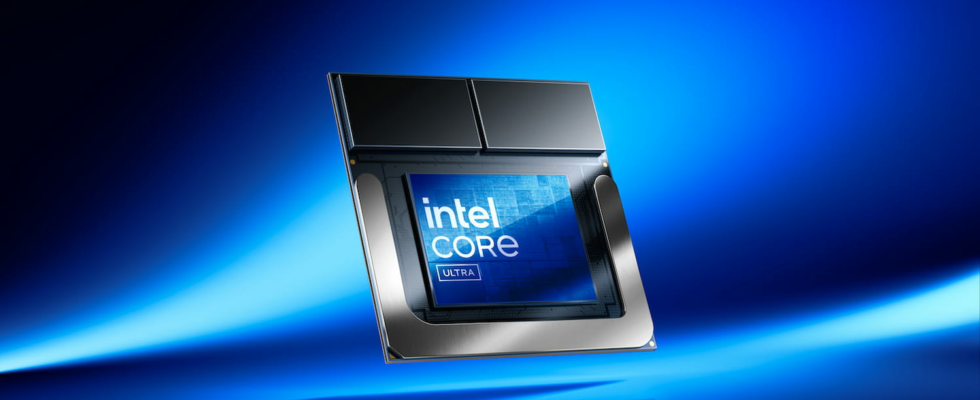A few days before the opening of the IFA show in Berlin, Intel unveils its new Core Ultra Lunar Lake processors which promise to make Qualcomm PC chips look ridiculous, with figures to back it up.
The small world of PC processors has been shaken up a bit since the arrival of Qualcomm at the beginning of June with its Snapdragon Elite. Until then, Intel and AMD were more or less wisely facing off in a duel. Present in the Copilot+ PCs, Qualcomm’s chips adopted by many manufacturers have had the effect of giving a little boost to a purring market. And Intel, until then a little behind in the very fashionable field of artificial intelligence, has felt the wind of the cannonball. To nip the ambitions of this newcomer in the bud, the foundry has just unveiled its new tactical weapon: Lunar Lake, a new generation of processors dedicated to laptops. In its sights: Qualcomm of course. And throughout its presentation, Intel did not hold back from fining the smartphone processor specialist, with great reinforcement of performance comparisons.
Intel Lunar Lake: Better Endurance
These new Core Ultra Series 200V processors feature eight cores: 4 high-performance cores (P-Core) and 4 high-efficiency cores (E-Core) combined with 8 MB of cache memory. Intel thus indicates an impressive reduction in power consumption.
According to the manufacturer, on a laptop, its Core Ultra 7 268V processor would display a battery life of 20.1 hours with the UL Procyon benchmark (test signed by the same publisher as 3DMark and which combines many office and graphic uses) when the same PC, with an equivalent configuration but powered by the Snapdragon X1E-80-100 chip from Qualcomm, peaks at 18.4 hours. Same observation with a Core Ultra 9 288V which lasts 14 hours against 9.5 hours with the Snapdragon X1E-78-100 and 10.1 hours with the AMD HX370 (Ryzen 9 AI). However, let’s wait for the tests to check if Intel hasn’t gotten too carried away.
However, we were able to see this new processor in action during the presentation and noted that its power consumption, for example when playing a 4K video on YouTube, is half that of a Meteor Lake.
Intel Lunar Lake: increased performance
On the power side too, Intel focused on the capabilities of its latest product to once again point out the flaws in Qualcomm’s ARM chips. Both with the tests conducted in Photoshop and with video encoding and decoding, the foundry seems to systematically place itself ahead of its American competitor.
Graphics-wise, it’s also thanks to the new Arc Xe2 GPU. According to the manufacturer, it’s 31% more powerful than the GPU of a Core Ultra 7 155H and 16% more powerful than that of an AMD HX370. As for the comparison with Qualcomm, Intel didn’t hold back in making fun of the lack of compatibility of the ARM platform. Of the 45 games reviewed for the measurements, 23 didn’t work with the Snapdragon X1E-84-100. And the new Core Ultra was 68% more powerful with compatible games, again according to Intel.
Power consumption also seems to be well controlled in the game as we were able to see during the demonstration we were able to attend.
Intel Lunar Lake: a chip also designed for AI
The possibilities related to artificial intelligence remain one of the main arguments put forward by PC manufacturers since the beginning of the year. Qualcomm has of course relied heavily on this element in the Copilot+ PCs. There is no question of being left behind for Intel. Its new toy claims 120 TOPS (trillion operations per second or a thousand billion operations per second) when Qualcomm’s Snapdragon X Elite climbs to 45 TOPS. The trick is to distribute the load. The GPU displays 67 TOPS, the NPU (neural processor dedicated to AI), climbs to 48 TOPS and the CPU to 5 TOPS. Enough to prove more efficient than its elder Core Ultra 7 155H and the Snapdragon X1E-78-100.
Intel Lunar Lake: nine versions on the program
As usual, Intel is releasing its new processor in several versions. There are four Core Ultra 5s, four Core Ultra 7s and one Core Ultra 9. All retain an architecture based on 8 cores. What differentiates them is, among other things, the frequencies (from 1.85 GHz for the Core Ultra 5 226V to 2.05 GHz for the Core Ultra 9 288V), the cache memory (from 8 to 12 MB) and the amount of RAM that the chip can manage (from 16 to 32 GB).
The only unknown left is pricing. Intel has remained silent on the subject. We will have to wait a few more days and see what the various manufacturers (Asus, Acer, HP, etc.) who will integrate this new processor into their ranges will offer. It also remains to be seen what response Qualcomm is preparing. The mobile SoC specialist will indeed hold its conference tomorrow afternoon, September 4.








